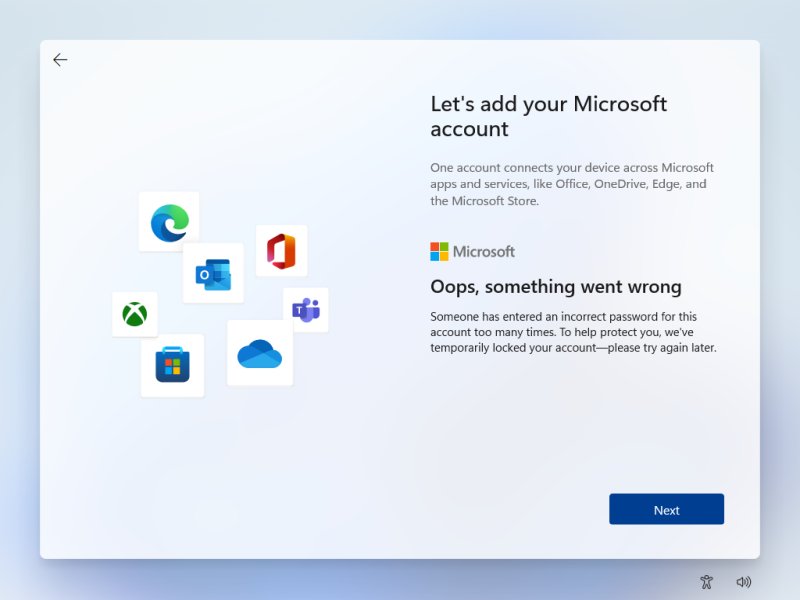Updated: September 22, 2021
I've been using Windows 10 in production for about two years now - testing it since even before the official release. Early on, my impression was that it was comparable to Windows 7. Okay. Nothing too special, new or revolutionary. Over time, this impression has changed. With subsequent semi-annual releases, I encountered issues I've never had in Windows before, mostly various system errors and bugs that speak of low quality and bad design. Then, Windows 10 would occasionally undo some of my tweaks and options, wasting my time, and forcing me to tighten the screws ever more. All in all, my outlook isn't bright or happy. Bored and exhausted by the nonsense would be the best word.
Now, Windows 11 is coming. As I've done many times in the past, I logged into my Insiders account and started testing, to see what awaits me. Right away, I found the experience quite dejecting. My early impression of Windows 11 Dev Build was mediocre at best, and it progressively got worse with each update. Different from Windows 10, though. What happened was, I found myself reliving 2011, when I tested Windows 8 and came to pretty much the same conclusions. To wit, this is what I think will unfold.
Why is Windows 11 like its (bad) predecessors?
There's that whole good-bad-good-bad Microsoft release meme thingie? Not far from the truth. You can't fault a company for trying new things, but you sure can fault them for trying failed ideas over and over. Back in 2011, they tried the whole "ZOMG Everything is Touch" on the desktop, which turned out to be a total flop. In 2021, they are trying it again, and the chances of success are even less, because at least back then, the beautiful and magnificent Windows Phone was a thing. Now, it's not. If there was one thing Microsoft should have nourished, it's the phone operating system. That was superb. Alas. Anyway.
Here's the breakdown of Windows 11 going the same way as the bad members of the family:
- Hardware requirements - Windows 11 has rather strict requirements - TPM 2.0, Secure Boot, newer generations of processors, and all that. If you judge these from the perspective of Windows 10 EOL in 2025, they aren't bad. But that's four years into the future. From the current perspective, they are ridiculous. This is just like Vista.

Checking whether your computer will survive the culling ...
- System menu - Windows 8 came with a new design, in the early preview builds you could do it, and later you couldn't. Public response: total rejection of the new start screen nonsense, and the techies went all Classic Shell. Now, Windows 11 is doing the same - it has a new menu that has an inefficient design, early on you could switch to the Windows 10 menu, now you cannot. The techies are clamoring for a replacement, including the awesome Open-Shell, a successor to Classic Shell.

So much efficiency, wowzers.
- Touch paradigms - Back in the Windows 8 era, Microsoft (and everyone else) believed that the future would be all touch, forgetting basic human evolution and anatomy. As it happens, Win32 desktop-designed mouse-and-keyboard applications remain the absolute monarch of the desktop, and this will never change. Because we still have only ten fingers, our hands can only do so and so, and no amount of marketing will ever change that. Windows 8 tried with tablet and mobile apps and failed. Windows 11 is trying with phone and mobile apps. This will of course not work, because mobile apps have zero merit or value on the desktop. They work great on tiny, finger-operated devices. They work awfully on big devices, operated by mouse and keyboard.
- Windows updates & online account - As you can lightly peruse from my Windows 8 Consumer Preview and Enterprise RTM Preview, back then, I complained about the new "strategy" on forcing updates onto users, and the attempts to get users to log into their system with an online (Microsoft) account. In Windows 11 Home Edition, this is almost a must now.

Something went wrong - the insistence on having an online account is what went wrong.
- Performance - For me, Windows 11 is slower than Windows 10. Please disclaim this with the fact I tested only on one hardware piece, my IdeaPad 3 machine (with AMD Ryzen 5 processor and NVMe storage), and that we're still dealing with the preview build of Windows 11. That said, this is not different from what I encountered with Windows 8 back in the day.
There are other, fresh problems, unique to Windows 11, which only compound the problem. But my approach here isn't to create a 1:1 mapping of the new to the old and vice versa. It's to shine a light to the cyclical futility of the whole effort. It's been 10 years since the same strategy was tried with Windows 8, and now, it's happening again, as though the past lessons have not been learned. Or perhaps they haven't, because hubris is such a powerful emotion. Or perhaps they have, and have been forgotten, and it's someone else's time to try brave new (and by that I mean old) ideas.
So what will happen?
I want to jot down my predictions - in a few years, I'll go back to this article, the same way I do with all my past articles, and re-read my own words, and see how right I was. So far, I've not disappointed myself too much. I only cry once a week or so.
Now, Microsoft has already messed up with my prophesizing somewhat. Just recently, it announced that will allow Windows 11 to be installed on unsupported devices, which then may or may not get security updates. This may yet change. So now, I will give you two predictions, one based on the current status, and one with an idea scenario where anyone can reliably update to Windows 11.

This image is in the public domain.
If Microsoft keeps the current plan in place:
- It won't be much different from not allowing unsupported devices at all. The installation mode for unsupported devices will be via ISO, which means only nerds. Ordinary people will not see the update through Windows Update, so they won't get the latest version of Windows. Some nerds may update their boxes, but why should they go for an unsupported operating system, when they have fully functional systems now? Also, beyond 2025, what does it matter if one runs an unsupported version of Windows 10 without updates or Windows 11 with the same limitations?
- The growth curve of Windows 11 will be slow - comparable to Windows 8 - at least until 2025. New devices will be sold with Windows 11, but don't forget the current stock of devices with Windows 10 and/or those that don't have TPM and/or don't meet the other requirements for this operating system. This means that come the official release of Windows 11, for quite a while, people will prefer buying Windows 10 boxes, as there will be discounts and sales, in order to shift the massive volumes of unsupported hardware. This will further slow down Windows 11 adoptions rates in the short term.
If Microsoft changes its approach and allows a 10-like update process, there will be more adoption, but it still won't be as quick as with Windows 7. The reasons are as follows:
- Windows 10 is +2 successor to Windows 7, so there was quite a lot of old hardware to be updated. Not the case now. Don't forget, only until a few months back, Microsoft told us that WINDOWS 10 WILL BE THE LAST WINDOWS, so technically, people aren't running a 2015 system, they are running brand new systems!
- Speaking of that, Microsoft's semi-annual (fast) release cycle doesn't help. By giving people "new" stuff all the time (which is annoying but hey), Windows 10 hasn't really aged in any way. This makes for even LESS of a reason to upgrade to Windows 11. Microsoft only gives 18 months of support for the semi-annual releases, so technically, everyone has an operating system that is less than two years old. When people started upgrading from Windows 7, it was already 6+ years old. The equivalence will only occur in 2025.
- The hardware improvements have slowed down. Considerably. I still have desktops from 2011, laptops from 2010-2013, and they all run beautifully. Any i-gen processor is modern enough for most common tasks today. Moore's Law ain't a thing anymore. If you needed to upgrade your hardware every 3-5 years in the past, this is no longer necessary. Add SSD into the equation, and even the failure of mechanical disks isn't an issue anymore. The actual performance considerations for hardware upgrades are so much less than in the past. Expecting people to upgrade hardware just to have a new operating system will not work. It simply won't.
On top of this, Microsoft will also struggle with the pushback over their new menu and the insistence on online account for the Home edition. This won't create a vibrant ecosystem of users enjoying their apps and whatnot - this will create noise and garbage. Remember, if people want touch, they ALREADY have it on their phone. Young people don't have a NEED for laptops or desktops the way dinosaurs do. And dinosaurs will not bother with this new-age Utopia. It's a wrong business model for wrong people on a wrong form factor.
And hereby I conclude my predictions.
Conclusion
The big problem that Microsoft has is that it has created the perfect ecosystem for serious work. It's called the desktop. I'm not talking about who invented the idea and all that. The simple reality is that 90% of all productivity systems are running Windows, they are used with a keyboard and a mouse, and people do serious work there. The smartphones have been around for a while now, and still no one does any real work on them. Because efficiency. Because anatomy. Because thermodynamics. That's all there is to it.
Win32 is the desktop. The desktop is Win32. Anything else is a mistake. It cannot work. You need a different form factor. AR/VR and all that. On the desktop, with a keyboard and a screen in front of your eyes, there's only one way. The same way Homo Sapiens is the only extant member of the species, so is the desktop the only viable form of use on the classic computer. Microsoft helped create this reality. It cannot undo it, without undoing itself. Remember what happened in the 90s, cough cough?
Well, now, how do you justify future work if your existing product is complete (and good)? It's like painting over a picture. At some point, you start ruining it. Technically, Windows 7 had everything the desktop should have had. A culmination of 30+ years of development in this space. Pretty robust. So now, Windows 11 is an experiment that seems to try to upset the foundations. Sometimes, very rarely, this is how progress is made, and brilliance comes through. But most often, it's noise and damage. Windows 8 already proved that. The desktop has NOT changed since. The computing world has NOT changed since. So why would the experiment with Windows 11 be any different?
Rant over, opinion character limit exceeded. Bye bye.
Cheers.